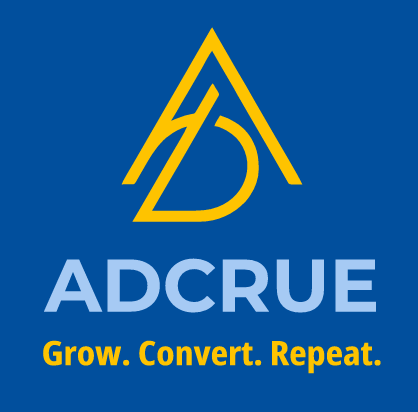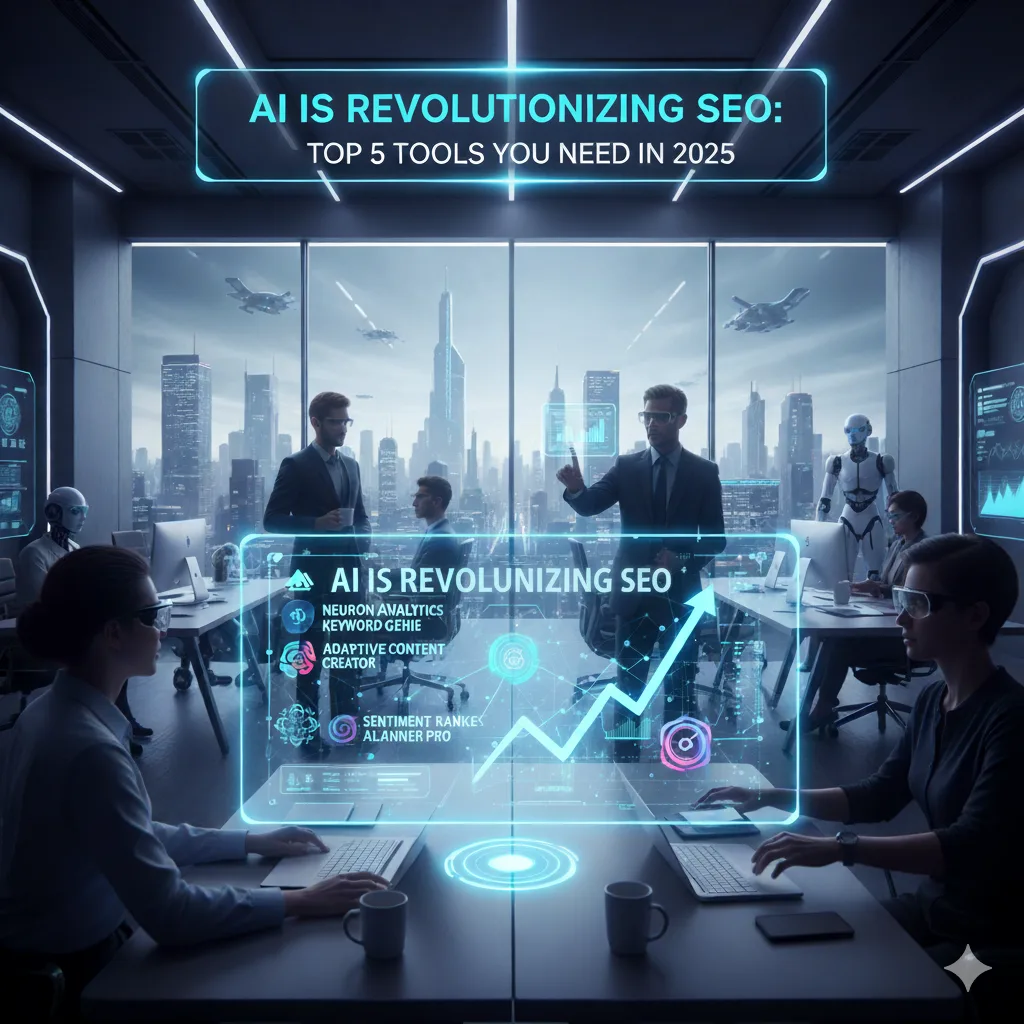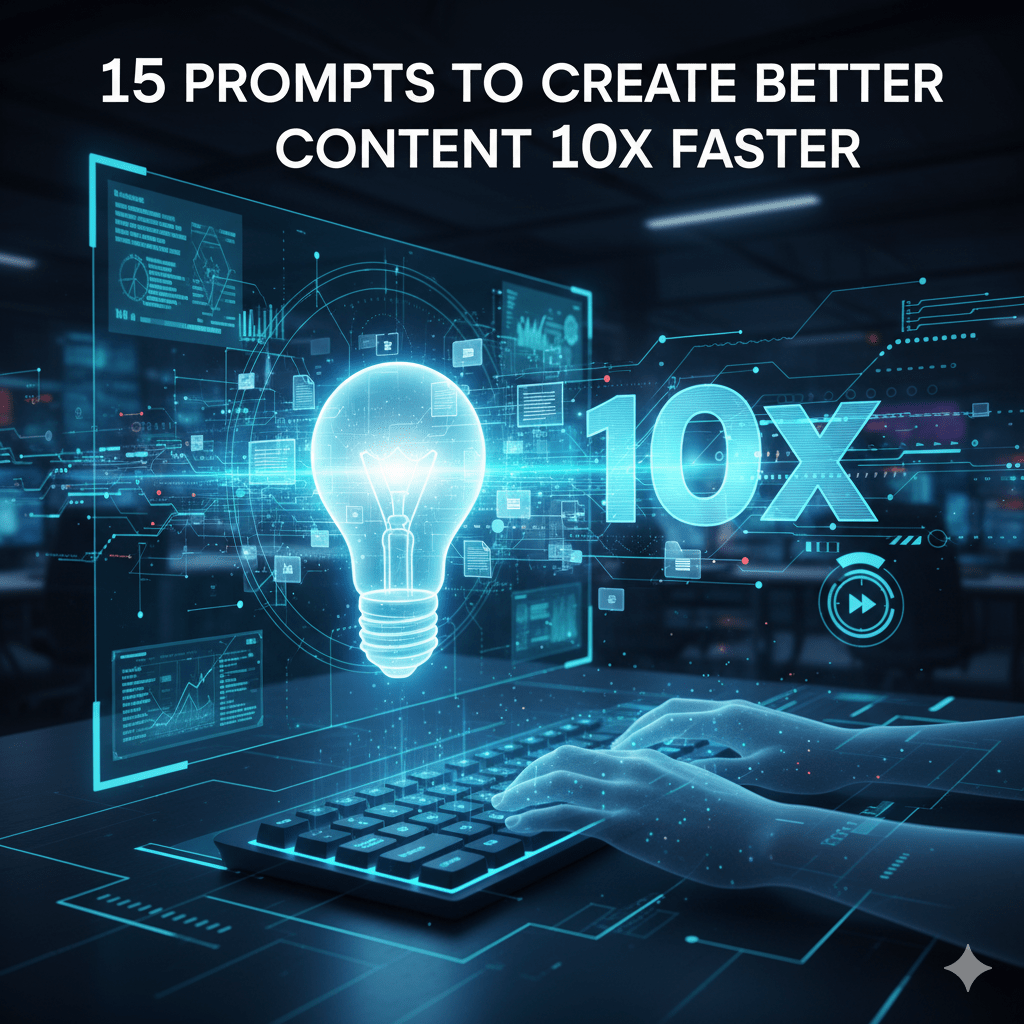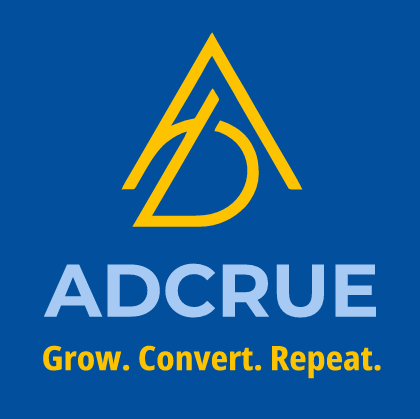AI-Powered PPC: How Machine Learning is Optimizing Ad Spend
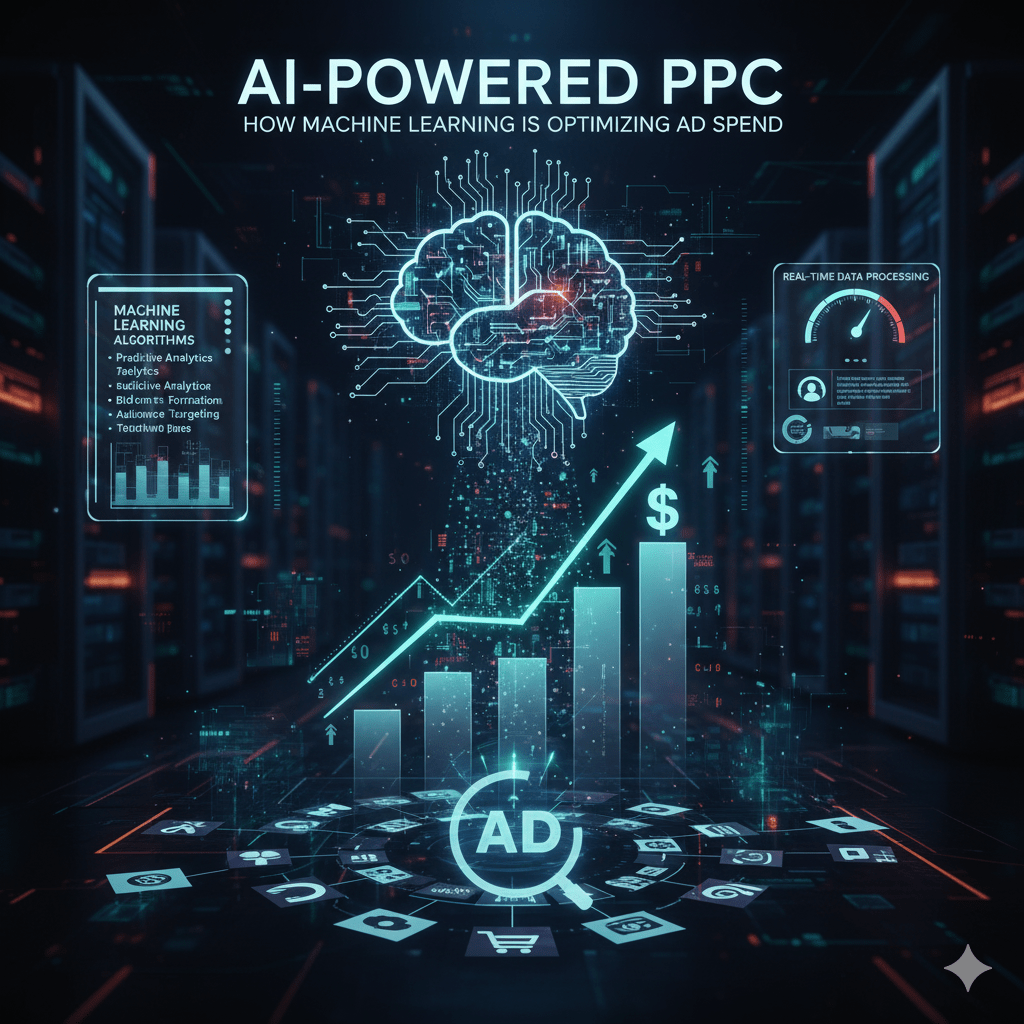
Pay-per-click advertising has always been part art, part science. You’d craft ad copy, choose targeting parameters, set bids, and hope your intuition was right. Successful campaigns required constant monitoring, manual bid adjustments, endless A/B testing, and significant expertise to avoid wasting budget.
Machine learning and artificial intelligence have fundamentally changed this equation. Modern PPC platforms powered by AI can analyze millions of signals simultaneously, predict which audiences will convert, automatically adjust bids in real-time, optimize creative performance, and continuously improve campaign results—all without human intervention.
At Adcrue, we’ve managed over ₹12 lacs in PPC spend across platforms. What we’ve learned is clear: businesses leveraging AI-powered PPC strategies are seeing 40-60% better ROI than those still managing campaigns manually. The gap is only widening.
Why AI Matters More in PPC Than Almost Any Other Marketing Channel
PPC has unique characteristics that make it perfect for AI optimization:
Massive data volume: Every click, impression, and conversion generates data points AI can learn from.
Real-time decisions: Bid adjustments need to happen in milliseconds, far faster than humans can respond.
Complex variables: Hundreds of signals influence ad performance—time, device, location, user behavior, competitor activity, and more.
Immediate feedback: You know within hours whether your changes improved or hurt performance.
High financial stakes: Small optimization improvements can mean thousands or millions in additional revenue or saved costs.
Humans simply cannot process this amount of data or respond quickly enough to optimize effectively. AI can—and it’s transforming PPC performance for businesses that embrace it.
The 5 Ways AI is Revolutionizing PPC Campaign Performance
1. Smart Bidding: AI-Powered Bid Optimization
Manual bid management is obsolete. You’d look at performance data, guess whether to increase or decrease bids, make changes, and hope you improved results. This approach wastes massive amounts of budget.
AI-powered smart bidding analyzes hundreds of signals in real-time to set optimal bids for every auction. Google’s Smart Bidding, for example, considers device, location, time of day, browser, operating system, historical user behavior, likelihood to convert, and dozens of other factors humans can’t possibly evaluate quickly enough.
The Smart Bidding Strategies Worth Using:
Target CPA (Cost Per Acquisition): Tell Google your target cost per conversion, and the AI automatically adjusts bids to get you as many conversions as possible at that cost. Perfect when you know your acquisition economics and want to scale predictably.
Target ROAS (Return on Ad Spend): Specify your target return (e.g., ₹400 revenue for every ₹90 spent), and Google optimizes bids to achieve that ratio. Ideal for e-commerce where you track revenue per conversion.
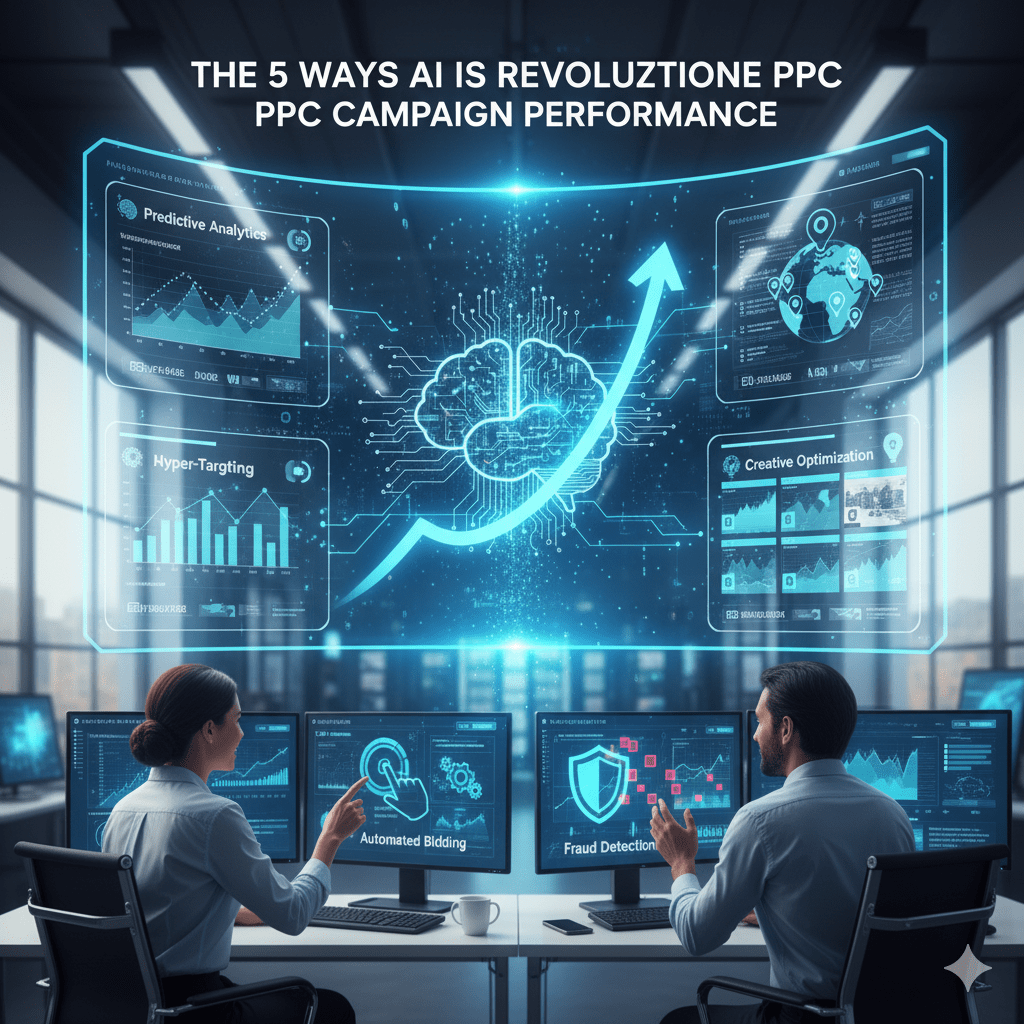
Maximize Conversions: Give Google a budget, and it will get you the most conversions possible within that spend. Best when you’re in growth mode and every conversion has similar value.
Maximize Conversion Value: Like maximize conversions, but optimizes for the highest total conversion value, not just volume. Essential when your conversions have different values (like varied product prices).
Adcrue Case Study: A home services client was manually managing bids across 300+ keywords, spending 10+ hours weekly on bid adjustments. We switched to Target CPA smart bidding with a ₹450 target (their profitable CPA). Results after 90 days:
- Cost per acquisition dropped from ₹820 to ₹450 (27% improvement)
- Conversion volume increased 34%
- Time spent on bid management reduced to 30 minutes weekly
- Overall campaign ROI improved by 63%
The AI was analyzing and adjusting bids thousands of times daily based on signals our team couldn’t possibly track manually.
Implementation Tips from Adcrue:
- Smart bidding needs conversion data to learn—start with at least 30 conversions in 30 days
- Give the algorithm 2-3 weeks to learn before judging performance
- Don’t panic during the learning phase—performance often dips temporarily
- Feed the AI quality conversion data—track what actually matters to your business
- Trust the system but verify monthly that it’s optimizing toward your actual goals
Don’t miss our related articles on effects of ai and the prompts to make your life easier, where we cover more strategies like this.
2. Responsive Search Ads: AI-Powered Creative Optimization
Traditional PPC meant writing ads, testing them, and manually determining winners. You’d create 2-3 ad variations, wait for statistical significance, pick a winner, and start over. This process was slow and limited.
Responsive Search Ads (RSAs) leverage AI to test hundreds of ad combinations automatically. You provide up to 15 headlines and 4 descriptions, and Google’s AI tests different combinations, learns which perform best, and shows the highest-performing variations more frequently.
How to Maximize RSA Performance:
Provide maximum variety in headlines. Don’t write 15 variations of the same message. Include:
- Benefit-focused headlines (“Save 40% on First Order”)
- Feature-focused headlines (“Free Shipping + 60-Day Returns”)
- Question-based headlines (“Tired of Expensive Shipping?”)
- Call-to-action headlines (“Shop Now – Limited Stock”)
- Brand differentiation (“Family-Owned Since 1987”)
- Urgency-driven headlines (“Sale Ends Sunday!”)
Pin strategically but sparingly. You can pin certain headlines to specific positions, but over-pinning limits the AI’s ability to optimize. Adcrue recommendation: Pin your brand name to headline position 1 or 3, but let the AI optimize everything else.
Use keyword insertion smartly. Dynamic keyword insertion makes ads more relevant to searches, but use it judiciously—don’t let it create awkward phrasing.
Provide diversity in descriptions too. Give the AI different approaches to test in the description section.
Real Performance Data: An Adcrue e-commerce client replaced their manually-managed expanded text ads with properly-structured RSAs. Results after 60 days:
- Click-through rate increased from 3.4% to 5.2%
- Conversion rate improved from 2.1% to 3.6%
- Cost per conversion decreased by 31%
- Ad testing time reduced from 8 hours monthly to 30 minutes
The AI ran what would have taken years of manual testing in just weeks, finding optimal combinations we’d never have discovered manually.
3. Audience Targeting: AI-Powered Precision
Traditional targeting was demographic guesswork. You’d target “males, 25-45, interested in sports” and hope that was your audience. Much of your budget reached people who’d never convert.
AI-powered audience targeting analyzes billions of behavioral signals to identify people most likely to convert, even if they don’t fit your assumed demographic profile. This includes in-market audiences (people actively researching products like yours), affinity audiences (people with sustained interests aligned with your offering), remarketing audiences (people who’ve interacted with your brand), similar audiences (people who behave like your converters), and custom intent audiences (people searching specific keywords and visiting specific URLs).
Advanced AI Audience Strategies:
Customer Match with AI expansion. Upload your customer email list, and Google can identify similar users across the web. Adcrue has seen customer match audiences convert at 3-5x the rate of cold traffic.
In-market audiences with machine learning optimization. Google identifies people showing purchase intent, and its AI refines targeting as it learns who actually converts for your specific business.
Predictive audiences. Upload conversion data, and AI identifies common characteristics, then finds more people matching those patterns—often discovering segments you’d never have targeted manually.
Sequential remarketing with AI optimization. Show different ads based on previous interactions, with AI determining optimal messaging and timing for each stage.
Adcrue Success Story: A B2B SaaS company was targeting broad job title audiences with poor results. We implemented:
- Customer Match audience from their best clients
- Google’s similar audiences to expand reach
- In-market audiences for their software category
- Layered with AI-optimized smart bidding
Results over 120 days:
- Cost per qualified lead dropped from ₹940 to ₹524
- Lead quality improved (sales close rate up 28%)
- Campaign reached 3.2x more qualified prospects
- Overall marketing ROI increased 187%
The AI found patterns in converting users that our team never would have identified manually.
4. Performance Max Campaigns: Fully Automated AI Campaigns
Performance Max (PMax) represents Google’s most AI-driven campaign type. You provide assets (images, videos, headlines, descriptions), specify goals, set your budget, and Google’s AI handles everything else—choosing where to show ads (Search, Display, YouTube, Discover, Gmail), determining optimal bidding, creating ad combinations, and identifying best audiences.
This sounds like “set it and forget it,” but strategic input still matters enormously.
How to Win with Performance Max:
Feed quality assets. Provide multiple high-quality images (various sizes), short and long headlines, various descriptions, and videos (even simple ones). The more variety, the better AI can optimize.
Set clear conversion goals. Define what success looks like—purchases, leads, phone calls, form submissions. The AI optimizes toward what you tell it matters.
Provide audience signals. Give Google hints about your best audiences through custom segments, customer lists, or demographic targets. The AI uses these as starting points before expanding.
Use asset groups for different offerings. Create separate asset groups for different products or services with unique messaging for each.
Monitor search term reports religiously. PMax includes search inventory, and you need to exclude irrelevant terms regularly to prevent waste.
Adcrue Implementation Results: We launched Performance Max for a multi-location service business with 8 different service offerings. Previous campaigns used traditional search and display separately.
PMax campaign after 90 days:
- 42% lower cost per lead than previous search campaigns
- 156% more conversion volume
- Appeared across 7 different Google properties automatically
- Discovered 3 audience segments that converted well but weren’t in previous targeting
- Reduced campaign management time by 70%
The AI identified opportunities across channels we’d never have tested manually due to time constraints.
Performance Max Warnings: PMax is powerful but not magic. Common mistakes:
- Launching without sufficient conversion data (need 30+ conversions monthly minimum)
- Not providing enough asset variety for the AI to test
- Setting vague conversion goals that don’t align with business objectives
- Not monitoring and excluding poor-performing search terms
- Expecting immediate results during 2-3 week learning phase
5. Automated Recommendations and Insights
Modern ad platforms provide AI-generated recommendations that often include overlooked optimization opportunities. Google Ads, Facebook Ads Manager, and Microsoft Advertising all offer suggestions powered by machine learning.
Types of AI Recommendations Worth Implementing:
Bid strategy recommendations: When AI suggests switching to smart bidding or adjusting targets based on performance patterns.
Budget recommendations: When AI identifies campaigns being limited by budget that could profitably scale.
Keyword recommendations: New search terms performing well in your account that should become formal keywords.
Audience expansion recommendations: Similar audiences or segments showing conversion potential.
Ad strength improvements: Suggestions to improve ad relevance and quality scores.
Negative keyword recommendations: Terms wasting budget that should be excluded.
Adcrue Process: We review AI recommendations weekly for all client accounts. We don’t blindly accept all suggestions, but we’ve found that implementing 60-70% of Google’s recommendations typically improves account performance by 15-25%.
One client was skeptical of AI recommendations, preferring human-only management. We A/B tested: one campaign with AI recommendations implemented, one with human-only optimization. After 90 days, the AI-assisted campaign had 34% better ROI. They’re now believers in human-AI collaboration.
The Right Way to Implement AI-Powered PPC
AI doesn’t mean “hands off completely.” It means strategic oversight with AI handling optimization execution. Here’s the Adcrue framework:
Phase 1: Foundation (Weeks 1-2)
- Audit current campaign structure and performance
- Ensure conversion tracking is accurate and comprehensive
- Set clear, measurable goals aligned with business objectives
- Organize campaigns logically for AI optimization
- Gather quality creative assets for RSAs and PMax
Phase 2: AI Implementation (Weeks 3-4)
- Transition to smart bidding strategies (start with one campaign to test)
- Convert existing ads to Responsive Search Ads
- Set up Performance Max campaigns for top priorities
- Implement audience targeting with AI expansion
- Configure automated rules for budget management
Phase 3: Learning Period (Weeks 5-7)
- Let AI algorithms learn (resist urge to interfere too much)
- Monitor performance but don’t make major changes
- Ensure data quality feeding into AI systems
- Document performance against baseline
Phase 4: Optimization (Week 8+)
- Review AI-generated insights and recommendations weekly
- Implement valuable suggestions
- Provide additional assets for testing
- Refine conversion tracking based on business outcomes
- Scale what’s working, pause what’s not
- Conduct competitive analysis and adjust strategy
Ongoing: Strategic Management
- Monthly strategy reviews (are we optimizing toward real business goals?)
- Quarterly competitive analysis and market assessment
- Continuous creative refreshes (new RSA headlines, PMax assets)
- Landing page testing and optimization
- Budget allocation across campaigns and channels
Common AI PPC Mistakes That Waste Budget
Expecting immediate results. AI needs data to learn. Performance often dips during the first 1-2 weeks as algorithms test and learn. Patience is essential.
Poor conversion tracking. If you’re telling AI to optimize for form submissions but what actually matters is qualified leads that close, you’re optimizing for the wrong goal. Track what matters to revenue.
Insufficient data volume. Smart bidding needs at least 30 conversions per month to function properly. Below that threshold, manual bidding or maximize clicks may be better.
Not providing enough creative variety. AI can only optimize what you give it. Provide diverse headlines, descriptions, and images for best results.
Completely hands-off management. AI handles optimization, but humans need to provide strategy, monitor for major issues, exclude irrelevant traffic, and ensure alignment with business goals.
Ignoring landing page quality. The best AI can’t fix a terrible landing page. Ensure your post-click experience converts.
Over-constraining the AI. Tight budgets, overly specific targeting, and excessive restrictions prevent AI from finding optimal performance. Give it room to explore and learn.
Measuring AI PPC Success: Metrics That Matter
Vanity metrics don’t pay the bills. Focus on metrics tied to business outcomes:
Primary Metrics:
- Cost per acquisition (CPA): Are you acquiring customers/leads profitably?
- Return on ad spend (ROAS): For every dollar spent, how much revenue generated?
- Conversion rate: What percentage of clicks become customers?
- Customer lifetime value to CAC ratio: Are you acquiring customers who’ll be profitable long-term?
Secondary Metrics:
- Quality score: Indicates ad relevance and landing page experience
- Impression share: What percentage of available impressions are you capturing?
- Click-through rate: Are ads compelling enough to drive clicks?
- Conversion value per cost: Are you maximizing value, not just volume?
Diagnostic Metrics:
- Search term report analysis: What queries trigger your ads?
- Hour/day performance: When do your best conversions happen?
- Device performance: Where should you increase or decrease presence?
- Audience segment performance: Which audiences convert best?
Adcrue Reporting Framework: We create custom dashboards that tie PPC performance directly to business outcomes. For e-commerce clients, we track revenue and profit. For service businesses, we track qualified leads and closed deals. For SaaS, we track trial signups and paid conversions.
Tracking just clicks and impressions is meaningless. Track what matters to revenue and profit.
The Future of AI in PPC: What's Coming
AI in PPC is still evolving rapidly. Here’s what Adcrue is watching:
Generative AI for creative. Google is already testing AI-generated ad images and videos. Soon, you’ll describe your ad concept, and AI will generate complete creative assets automatically.
Predictive analytics for budget planning. AI will forecast seasonal trends and recommend budget allocation months in advance based on historical patterns and market data.
Cross-channel AI optimization. Rather than optimizing each platform separately, AI will manage budget allocation across Google, Facebook, TikTok, and other channels automatically based on performance.
Voice and visual search advertising. As search behavior evolves beyond text, AI will optimize for voice queries and image-based searches.
Hyper-personalization at scale. AI will create individualized ad experiences for each user based on their unique journey and likelihood to convert.
The businesses mastering AI-powered PPC now will have enormous advantages as these capabilities expand.
Final Thoughts: AI is Your Competitive Advantage
At Adcrue, we’ve managed PPC campaigns the old way and the AI-powered way. There’s no comparison. AI-powered campaigns consistently deliver:
- 30-50% better ROI than manual management
- 60-80% reduction in management time
- Faster discovery of winning strategies
- Ability to scale profitably beyond human capacity
But AI isn’t magic—it’s a tool that amplifies good strategy and punishes bad strategy faster. You still need clear goals, quality creative, and strong offers. AI just helps you execute better, faster, and more profitably.
Your competitors are already using AI-powered PPC. Every month you delay is a month they’re capturing market share while spending less.
Ready to 2x your PPC performance with AI-powered strategies? Contact Adcrue for a free PPC audit. We’ll analyze your current campaigns and show you exactly how much you’re leaving on the table.
